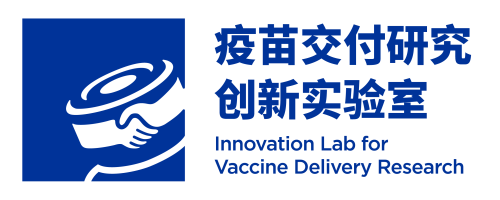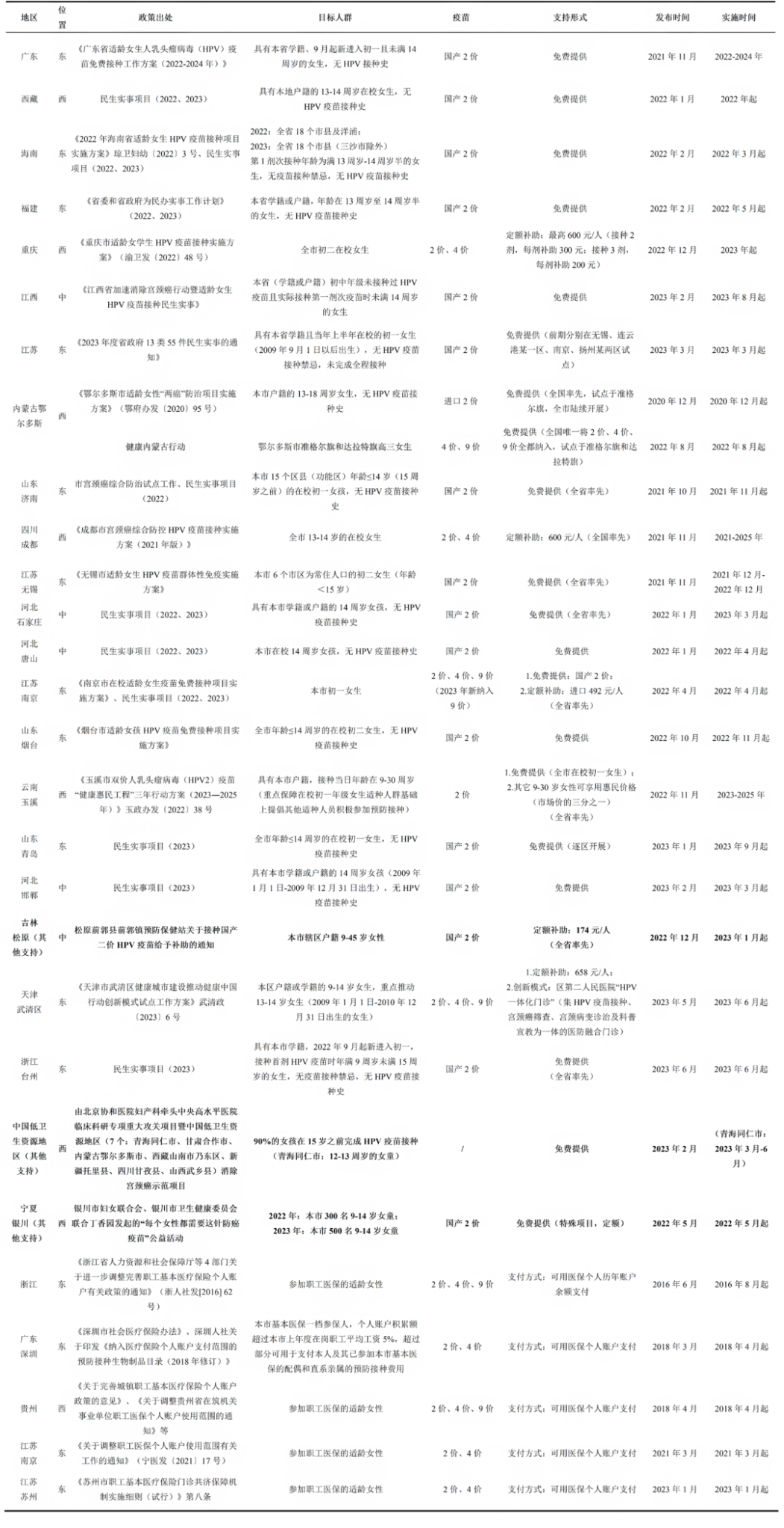Policy Updates
01
Establish a Dynamic Adjustment Mechanism for China’s National Immunization Program
On April 19, the 2025 Vaccine and Health Conference was held in Wuhan. In his keynote speech, Dr.Shen Hongbing, Deputy Director of the National Health Commission and Director of the Chinese Center for Disease Control and Prevention (CDC), emphasized that the scope of vaccines included in China’s National Immunization Program (NIP) still lags behind international consensus. He announced that China will optimize its NIP strategies based on the principles of comprehensive planning, dynamic adjustment, and phased implementation. Future research directions for dynamically adjusting the NIP include:
1)Introducing new vaccines: Vaccines that are internationally recognized, target diseases with heavy burden, demonstrate high cost-effectiveness, have sufficient production capacity to meet demand, and are financially sustainable should be incorporated into the NIP as soon as possible.
2)Optimizing existing immunization schedules: Immunization programs should be adjusted based on changes in epidemiological patterns, prevention and control goals, and vaccine characteristics.
3)Exploring vaccine withdrawal procedures: Vaccines that are not intended for universal population-wide immunization, or are no longer aligning with disease control needs, should be considered for withdrawal from the NIP or being recategorized as reserve vaccines.
Source: Southern Metropolis Daily, The Paper
Journal Article Recommendation
01
Health impact and economic evaluation of the expanded program on immunization program in China from 1974-2024: a modelling study
This article, published in The Lancet Public Health by Hai Fang et al., quantifies the health and economic impacts of China’s Expanded Program on Immunization (EPI) over the period 1974–2024, providing critical evidence for informing global immunization policies.
Using mathematical modelling, the study compared two scenarios: the real-world vaccination scenario (routine immunization for children aged 0–6 years) and a counterfactual no-vaccination scenario (vaccine coverage set to zero), to estimate the health and economic benefits of vaccines targeting eight pathogens (measles, pertussis, hepatitis B, tuberculosis, hepatitis A, Japanese encephalitis, meningitis A, and poliomyelitis) included in China’s EPI.
The findings showed that from 1974 to 2024, China’s EPI averted approximately 703.02 million cases of disease and 2.48 million deaths, equivalent to 160.22 million disability-adjusted life-years (DALYs) averted. Based on the birth cohort approach, the study projected that lifetime vaccination would avert 707.41 million cases and 7.01 million deaths, reducing 279.02 million DALYs, thereby demonstrating the sustained release of long-term health benefits and herd immunity effects resulting from childhood vaccination.
From a societal perspective, the aggregated cost of vaccination over the period was estimated at US$124.06 billion, while the total benefits reached US$2,417.85 billion. The overall benefit–cost ratio was 19.48 from the societal perspective and 8.02 from the health-care provider’s perspective, confirming that China’s EPI generated exceptionally high economic returns.
The study concludes that China’s EPI has achieved remarkable improvements in health and economic outcomes over the past 50 years. To maintain high vaccination coverage and expand vaccine inclusion both within China and globally, sustained investment in immunization programs is necessary to support the goals of the Immunization Agenda 2030.
https://doi.org/10.1016/S2468-2667(25)00039-8
02
Health economics evaluation of vaccination strategies for different human papillomavirus vaccines for 12‑year‑old female adolescents in China
This study, published in the Chinese Journal of Preventive Medicine,aimed to analyze the cost-effectiveness of administering two doses of different types of human papillomavirus (HPV) vaccines to 12-year-old female adolescents, providing evidence to optimize HPV vaccination strategies in China. A decision tree–Markov model was constructed, targeting genital warts and cervical cancer as outcomes. Vaccine prices were set based on either the procurement price in pilot provinces (for HPV-2) or 50% of the self-paid market price (for HPV-4 and HPV-9). The model simulated a 12-year-old female adolescent cohort in 2023, comparing strategies of no vaccination, two doses of bivalent (HPV-2), quadrivalent (HPV-4), or nonavalent (HPV-9) vaccination. Outcomes assessed included the number of cervical cancer and genital wart cases prevented, total costs, quality-adjusted life years (QALYs), and incremental cost-utility ratios (ICURs).
The results showed that, compared to no vaccination, two doses of HPV-2, HPV-4, and HPV-9 could respectively prevent 55.2% of cervical cancer cases, 77.11% and 78.68% of genital wart cases, and 54.99% and 73.46% of cervical cancer cases. The ICURs for HPV-2, HPV-4, and HPV-9 vaccination strategies were –28,470.44 CNY/QALY, 29,328.26 CNY/QALY, and 48,106.85 CNY/QALY, respectively, all below the national per capita GDP threshold for 2023. Single-factor sensitivity analysis demonstrated robust results, with the discount rate, vaccine prices, and direct medical costs for low-grade precancerous lesions identified as the most influential parameters. Probabilistic sensitivity analysis showed that, compared to the 2023 national per capita GDP, the probability of HPV-2, HPV-4, and HPV-9 being cost-effective relative to no vaccination was 99.51%, 89.03%, and 67.81%, respectively. Moreover, only if the price per dose of HPV-4 and HPV-9 dropped below 26.12% and 20.68% of the current self-paid vaccination price, respectively, could a net cost saving be achieved.
In the case where HPV‑2 adopts the pilot province procurement price and the multivalent vaccine adopts a 50% self‑funded vaccination price, the vaccination of 12‑year‑old female adolescents with HPV‑2, HPV‑4 and HPV‑9 has cost‑effectiveness, and HPV‑2 is the most economical strategy.
https://doi.org/10.3760/cma.j.cn112150-20241120-00925
03
The barriers and facilitators of herpes zoster vaccination intentions of urban residents in China: a qualitative study
This study, published in Global Health Research and Policy, systematically explored the factors influencing herpes zoster (HZ) vaccination intentions among urban residents in China using a qualitative research approach. Guided by the Health Belief Model (HBM), the research conducted 12 focus group discussions across Beijing, Weifang (Shandong Province), and Nanning (Guangxi Province), involving a total of 59 urban residents aged 20 years and older. The study systematically analyzed participants’ knowledge of HZ, attitudes toward vaccination, risk perceptions, willingness to vaccinate, as well as key barriers and facilitators influencing vaccination behaviors.
The results revealed a low willingness to receive HZ vaccination among participants (27.1%). Major barriers included: (1) limited knowledge of HZ, including prevalence, risk factors, and complications; (2) the high cost of the vaccine (approximately RMB 3,200 for two doses); (3) limited access to reliable information sources; (4) insufficient knowledge among healthcare providers; and (5) concerns about vaccine safety and efficacy. Key facilitators for vaccination included personal experience of HZ-related pain, fear of recurrence, heightened risk perception, recommendations from healthcare providers, and the availability of policy subsidies.
The study recommends implementing multifaceted interventions: (1) strengthening community health education to enhance public awareness, especially among high-risk populations (≥50 years old); (2) reinforcing the role of primary healthcare providers in vaccine advocacy; and (3) exploring inclusion of HZ vaccination in immunization programs or establishing financial subsidy mechanisms to lower economic barriers.
The findings emphasize that authoritative advocacy from government bodies and professional organizations is critical in breaking down information barriers, enhancing vaccine confidence, and optimizing vaccination strategies. The study further suggests that future interventions should be refined through ongoing quantitative research.
https://doi.org/10.1186/s41256-025-00413-1
04
Systematic review and meta-analysis of interventions to increase the uptake of vaccines recommended during pregnancy
This article, published in NPJ Vaccines, evaluated the effectiveness of interventions aimed at improving the uptake of vaccines recommended during pregnancy through a systematic review and meta-analysis. The research team searched the literature up to July 2023, ultimately including 36 intervention studies, encompassing 18 demand-side interventions (such as patient education and SMS reminders), 11 supply-side interventions (such as healthcare quality improvement and performance incentives), and 7 multi-level interventions, covering vaccines including influenza, pertussis, tetanus, and COVID-19 vaccines. A random-effects meta-analysis was conducted, and the quality of evidence was assessed using the GRADE framework.
The results showed that demand-side interventions, particularly those involving patient education (e.g., brochures, videos, or one-on-one counseling), had modest effects (pooled RR = 1.18; 95% CI: 1.04–1.33), though the certainty of evidence was low (I² = 63.1%). SMS reminders alone did not significantly improve influenza vaccination rates (RR = 1.01; 95% CI: 0.93–1.09).
Supply-side interventions, such as quality improvement initiatives using the Assessment-Feedback-Incentive-eXchange (AFIX) model, showed limited effectiveness (pooled RR = 1.13; 95% CI: 0.96–1.33) with high heterogeneity (I² = 94%) and low certainty of evidence. Multi-level interventions that combined demand- and supply-side strategies produced relatively better outcomes (pooled RR = 1.62; 95% CI: 1.09–2.42), but with extremely high heterogeneity (I² = 97%) and very low certainty.
The study concluded that existing interventions have only modest effects on improving vaccination uptake during pregnancy, and their effectiveness varies significantly depending on geographical region, vaccine type, and implementation approach. The authors emphasize the need for context-specific strategies and call for more high-quality clinical trials to provide robust evidence to inform policies aimed at promoting vaccine uptake during pregnancy.
*The Assessment-Feedback-Incentive-eXchange (AFIX) model, developed by the U.S. Centers for Disease Control and Prevention (CDC), includes four core components: systematic assessment of vaccination coverage data; visualized feedback of results; establishment of incentive mechanisms; and promotion of peer-to-peer information exchange. Operating on a 3–6 month cycle, AFIX is a data-driven, positively reinforced strategy to assist vaccination clinics in continuously improving service delivery. It has been recommended by WHO as an effective approach for enhancing vaccination coverage and is applicable to primary immunization clinic quality improvement and new vaccine rollout efforts.
https://doi.org/10.1038/s41541-025-01120-1
05
Feasibility, Acceptability, and Effectiveness of a Smartphone App to Increase Pretransplant Vaccine Rates: Usability Study
This study, published in JMIR Formative Research, adopted a prospective cohort design to evaluate the effectiveness of the Immunize PediatricTransplant smartphone application in improving vaccine uptake among pediatric organ transplant candidates. It also assessed the app’s feasibility and acceptability among parents and transplant teams. From November 2021 to July 2023, 25 parent-provider dyads were recruited from three pediatric transplant centers in the United States (Children’s Hospital Colorado, Lurie Children’s Hospital, and the Children’s Hospital of Philadelphia), involving children awaiting liver, kidney, or heart transplants. The study was conducted in two phases: First, the child’s vaccination history was entered into the app; then, the parent and transplant providers used the app to share immunization information, access educational resources, and receive vaccine reminders. The primary outcome was the completion of all age-appropriate vaccinations by the time of transplant. Secondary outcomes included app usability and user satisfaction.
By the end of the study, 96% (24/25) of the children were up to date with all recommended vaccinations, with the only exception being one adolescent whose HPV vaccination was intentionally delayed due to immunosuppressive therapy. Among the 36 parents and providers who completed the exit survey, 97% reported feeling more informed about pretransplant immunizations, and 86% noted improved communication around vaccination. Furthermore, 91% of parents and 79% of providers stated they would recommend the app to other transplant families or teams. Key features rated as most helpful included centralized vaccine records (83%), automated reminders (67%), and educational content (58%).
The Immunize PediatricTransplant app significantly improved vaccine coverage among pediatric transplant candidates and was well received by both parents and healthcare providers. Future improvements may include integrating with electronic medical records (EMRs) and immunization information systems (IISs) to automate vaccine data entry and enhance real-world applicability.
06
Human papillomavirus vaccination at age 9 or 10 years to increase coverage – a narrative review of the literature, United States 2014–2024
This article, published in Human Vaccines & Immunotherapeutics, systematically reviewed 30 studies published between 2014 and 2024 to assess the potential impact of initiating human papillomavirus (HPV) vaccination at ages 9–10 on improving coverage in the U.S. The studies included 11 retrospective cohort studies, 12 intervention studies, and 7 feasibility or acceptability studies.
Retrospective cohort studies revealed that initiating HPV vaccination at ages 9–10 was associated with higher series completion rates compared to initiation at 11–12 years. For example, a study in Minnesota reported a completion rate of 99.5% for the 9–10 age group versus 91.7% for the 11–12 age group. However, these findings were subject to methodological limitations, and a causal relationship could not be established. Intervention studies indicated that multifaceted approaches—including electronic health record alerts, provider training, and patient education—could increase early initiation. However, the specific impact of 9–10 age initiation was difficult to isolate due to the bundled nature of interventions. Notably, 67% of healthcare providers acknowledged the protective value of initiating HPV vaccination at age 9, while 73% expressed concern that parents might not be ready for this recommendation.
The review concluded that although initiating HPV vaccination at ages 9–10 is feasible and potentially beneficial for improving coverage and timely series completion, its broader implementation requires supportive policy environments, targeted provider training, and enhanced parental education. Future high-quality research is needed to assess long-term effectiveness, particularly in low- and middle-income countries.
https://doi.org/10.1080/21645515.2025.2480870
Content Editor: Ziqi Liu
Page Editor: Ziqi Liu





